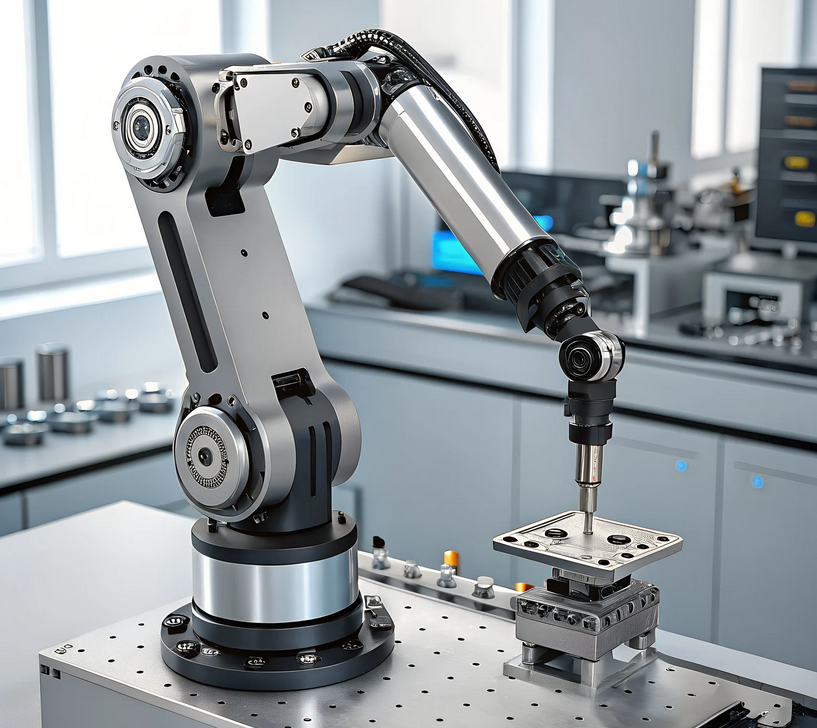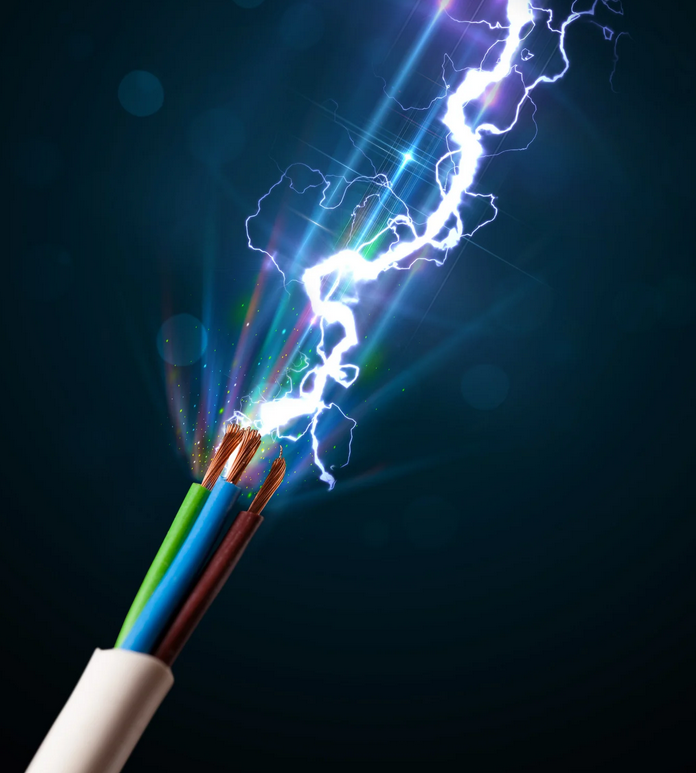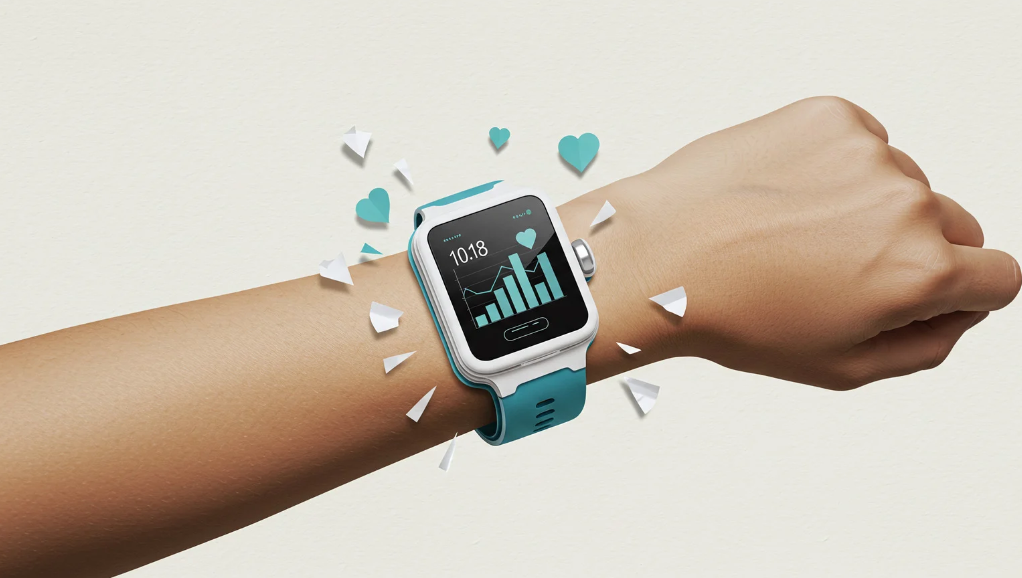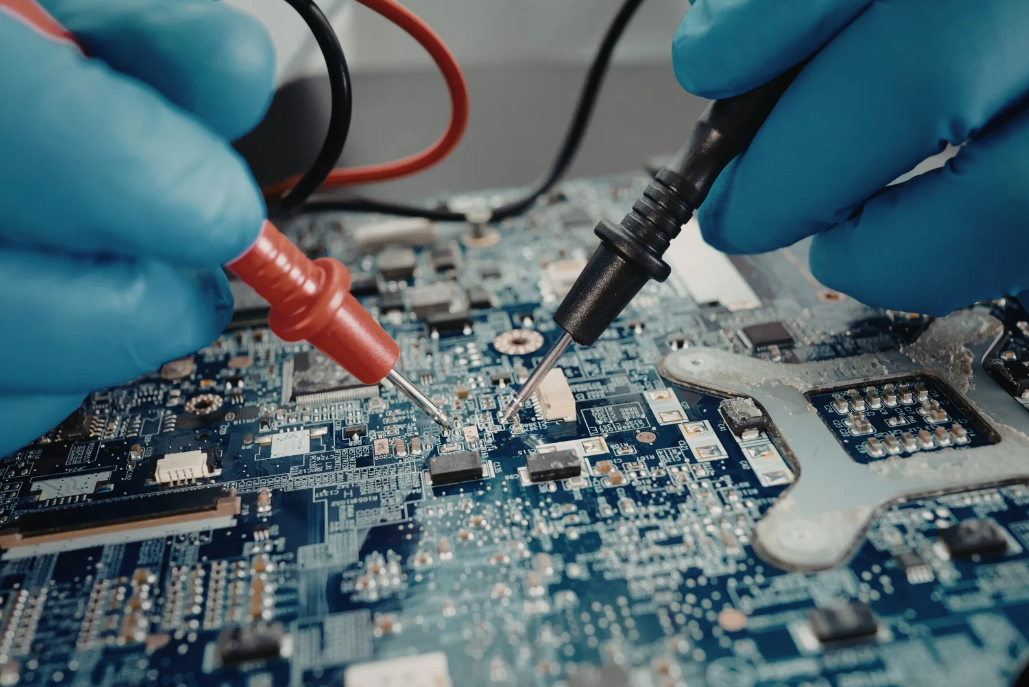Piezo ceramic transducers are pretty cool devices. They’re used in all sorts of things, from medical equipment to musical instruments. But what makes them tick? Let’s break down the basics.

Understanding the Piezoelectric Effect
Okay, so the piezoelectric effect is the heart of it all. Basically, it’s what happens when you squeeze or put pressure on certain materials, like piezo ceramics. When you do that, they generate electricity. And the reverse is also true: apply an electric field, and they change shape. This two-way street is what makes piezo transducers so versatile. It’s not magic, just some cool physics at work. This effect is used in piezo ceramics cylinders.
Converting Electrical to Mechanical Energy
So, how does this translate into something useful? Well, imagine you want to create a vibration. You can feed an alternating electrical signal into a piezo ceramic material. Because of the piezoelectric effect, the material will expand and contract in response to the signal. This expansion and contraction creates mechanical vibrations. The frequency of the vibration matches the frequency of the electrical signal. It’s a neat way to turn electricity into motion, and it’s super precise. The piezo ceramic welding transducers are used in sensor technology.

High-Frequency Vibration Generation
One of the things that makes piezo ceramic transducers special is their ability to generate really high-frequency vibrations. We’re talking ultrasonic frequencies, way beyond what humans can hear. This is because piezo ceramics can respond very quickly to changes in the electrical field. This ability to generate high-frequency vibrations opens up a whole world of applications, like ultrasonic cleaning, medical imaging, and even some types of welding. It’s all about getting those molecules moving at just the right speed.
Think of it like this: you have a tiny hammer that can tap incredibly fast. That’s essentially what a piezo ceramic transducer is doing when it generates high-frequency vibrations. It’s tapping at a molecular level, creating waves that can be used for all sorts of things.
Here’s a quick rundown of the frequency ranges:
| Frequency Range | Application Example |
| Low (20 Hz – 1 kHz) | Audio speakers, vibration sensors |
| Mid (1 kHz – 1 MHz) | Sonar, non-destructive testing |
| High (1 MHz+) | Medical imaging, ultrasonic cleaning |
Here are some of the advantages:
- High precision
- Fast response time
- Compact size
Diverse Applications of Piezo Ceramic Transducers in Sensing
Piezo ceramic transducers are super useful in sensing applications because they can turn mechanical energy into electrical signals, and vice versa. This makes them ideal for all sorts of sensors. Let’s look at some specific examples.
Precision in Pressure Sensing
Piezo ceramic transducers are great for pressure sensors. They can detect even tiny changes in pressure and turn them into electrical signals that we can measure. This is important in many fields, from monitoring blood pressure in medical devices to measuring pressure in industrial equipment. The sensitivity and quick response of these transducers make them a top choice for accurate pressure readings.
Advancements in Ultrasonic Detection
Think about how bats use sound to navigate. Ultrasonic sensors work on a similar principle, and piezo ceramic transducers are key to making them work. They generate ultrasonic waves and then listen for the echoes. By analyzing these echoes, the sensors can measure distances, detect objects, and even monitor fluid levels. You’ll find these sensors in everything from parking sensors in cars to medical imaging devices. The precision of ultrasonic transducers is really something.
Monitoring with Vibration Sensors
Ever wonder how engineers keep tabs on the health of machinery? Vibration sensors are often used, and piezo ceramic transducers are at the heart of many of them. These transducers can detect even small vibrations, which can be a sign of problems in a machine. By monitoring these vibrations, engineers can catch potential issues early and prevent breakdowns. This is used in industries like manufacturing, aerospace, and even in monitoring the structural integrity of bridges.
Accurate Temperature Measurement
It might seem surprising, but piezo ceramic transducers can also be used to measure temperature. The electrical properties of the ceramic material change with temperature, and these changes can be measured. While not as common as other temperature sensors, piezo ceramic transducers offer some advantages in certain situations, like high-temperature environments or where a fast response time is needed. They show good thermal stability, which is important for accurate temperature measurement.
Piezo ceramic transducers are really versatile. Their ability to convert energy between mechanical and electrical forms makes them ideal for a wide range of sensing applications. From pressure to ultrasound to vibration and even temperature, these transducers are playing an increasingly important role in modern technology.
Advantages of Utilizing Piezo Ceramic Transducers
Piezo ceramic transducers are pretty cool devices, and they’re becoming more and more common. What makes them so great? Well, a few things, actually. They have some serious advantages over other types of transducers, which is why you see them popping up everywhere.
Exceptional Sensitivity and Responsiveness
One of the biggest perks of using piezo ceramic transducers is their incredible sensitivity. They can detect even the tiniest changes in pressure, force, or acceleration. This makes them perfect for applications where precision is key. Think about medical devices, scientific instruments, or even high-end audio equipment. They respond super fast too, which is important in dynamic systems. It’s not just about detecting something; it’s about detecting it now.
Broad Frequency Range Capabilities
Another major advantage is the wide range of frequencies that piezo ceramic transducers can handle. They can operate effectively at both low and high frequencies, making them versatile for different applications. This is a big deal because some transducers are only good at one end of the spectrum. With piezo ceramics, you get a transducer that can do a lot more. For example, ultrasonic sensors use this capability to measure distances and detect objects.
Compact Design and Energy Efficiency
Piezo ceramic transducers are generally small and lightweight, which makes them easy to integrate into various systems. Plus, they don’t need a lot of power to operate. This is a huge advantage in portable devices or applications where energy conservation is important. Think about battery-powered sensors or wearable technology. The small size and low power consumption make them ideal for these kinds of applications. Piezo ceramics are also used in piezo stack actuators for atomizers in nebulizers, showcasing their versatility.
Piezo ceramic transducers are a great choice when you need something that’s sensitive, works across a wide range of frequencies, and doesn’t take up a lot of space or energy. They’re not perfect for every situation, but their advantages make them a solid option for many applications.
Key Characteristics of Piezo Ceramic Materials
Piezo ceramic materials are pretty cool because they can do a lot of different things. They’re not just some one-trick pony; they have a bunch of properties that make them useful in all sorts of situations. Let’s take a look at some of the key things that make them stand out.
Mechanical Strength and Durability
Okay, so first off, these materials are tough. They can handle a lot of pressure and still keep working. That’s super important because you don’t want something that’s going to break down easily, especially if it’s in a machine or device that needs to be reliable. Think about it – if you’re using a piezo ceramics cylinder in something like a car engine, it needs to be able to withstand high temperatures and vibrations without falling apart.
- Withstand high pressures
- Resistant to wear and tear
- Long operational lifespan
Superior Electrical Properties
But it’s not just about being strong. Piezo ceramics also have great electrical properties. They’re really good at storing and transferring energy, which is what makes them so useful in things like sensors and actuators. They have a high dielectric constant, which basically means they can store a lot of electrical energy. Plus, they don’t lose much energy in the process, which is always a good thing.
Versatility Across Industries
What’s really neat about piezo ceramics is how many different industries use them. You’ll find them in everything from medical devices to aerospace equipment. They’re used in ultrasonic transducers for imaging, in fuel injectors for cars, and even in musical instruments. It’s kind of amazing how one material can be so useful in so many different ways.
Piezo ceramics are used in a wide range of applications because they can convert mechanical energy into electrical energy, and vice versa. This makes them ideal for sensors, actuators, and transducers. Their ability to operate at high frequencies and withstand harsh conditions further expands their utility across various sectors.

Innovations in Piezo Ceramic Transducer Design
Alright, let’s talk about how piezo ceramic transducer design is changing. It’s not just about making them smaller; it’s about making them smarter and more efficient. People are coming up with some really cool stuff.
The Role of Piezo Ceramic Cylinders
Piezo ceramic cylinders are interesting. Instead of just a flat surface vibrating, you’ve got a whole cylinder that can expand and contract. This can lead to more powerful and focused energy output. Think about it like this: a cylinder can push or pull in all directions around its circumference, which is useful in applications needing uniform pressure or displacement. They’re being used more and more in high-precision pumps and actuators. The symmetrical design helps with stability, too.
Advancements in Piezo Ceramic Plate Transducers
Plate transducers are getting a makeover. It’s not just about slapping a ceramic plate onto something anymore. Now, they’re experimenting with different shapes, thicknesses, and even layering multiple materials. This lets them fine-tune the frequency response and sensitivity. Plus, new manufacturing techniques mean they can make these plates with incredible precision. This is important for medical imaging and ultrasonic sensors, where you need a really clear signal.
Exploring Piezoelectric Ceramic Disc Transducers
Piezoelectric ceramic disc transducers are probably the most common type, but even they’re seeing some cool innovations. People are playing around with different doping materials to improve their performance at high temperatures or under heavy loads. Plus, there’s a lot of work being done on making them more energy-efficient. Think about using them in piezo disc actuators for things like atomizers. The goal is to get the most vibration for the least amount of power. It’s all about optimizing the material properties and the electrode design.
The big push right now is towards miniaturization and integration. People want smaller, more powerful transducers that can be easily incorporated into existing systems. This means developing new materials and fabrication techniques that can handle the demands of modern applications.
Here’s a quick look at how different shapes affect performance:
| Transducer Shape | Advantages | Disadvantages |
| Disc | Simple, cost-effective | Limited displacement, lower force |
| Plate | Tunable frequency, good sensitivity | Can be bulky, complex mounting |
| Cylinder | High force, uniform displacement | More complex manufacturing, higher cost |
Here are some trends I’m seeing:
- Multi-layer designs: Stacking multiple layers of piezo material to increase displacement or force.
- Micro-fabrication: Using MEMS (Micro-Electro-Mechanical Systems) techniques to create tiny, high-precision transducers.
- Energy harvesting: Developing transducers that can generate electricity from vibrations or mechanical stress.
Overcoming Challenges and Future Directions
Piezo ceramic transducers are pretty cool, but they aren’t perfect. Like any tech, there are hurdles to clear and improvements to be made. Let’s look at some of the issues and where things are headed.
Addressing Signal Interference and Environmental Factors
One big problem is that these transducers can be sensitive to outside noise. Think about it: they’re designed to pick up tiny vibrations, so stray electrical signals or changes in temperature can mess things up. Shielding and careful calibration are key to getting reliable data.
Here’s a quick rundown of common interference sources:
- Electromagnetic interference (EMI) from nearby devices
- Temperature fluctuations affecting material properties
- Mechanical vibrations not related to the target signal
- Humidity causing changes in electrical conductivity
Dealing with these issues often means using filters, better grounding, and keeping the transducer in a stable environment. It’s not always easy, but it’s necessary for accurate readings.
Simplifying Integration Complexities
Another challenge is making these transducers easy to use in different systems. Sometimes, hooking them up to existing equipment can be a pain. You might need special amplifiers or signal processing units, which adds to the cost and complexity. The goal is to make piezoelectric transducer technology more plug-and-play.
Here are some areas where integration could be simpler:
- Standardized connectors and interfaces
- Software libraries for common signal processing tasks
- More robust designs that are less sensitive to external factors
Ongoing Research and Development Efforts
Luckily, lots of smart people are working on these problems. Researchers are exploring new materials, designs, and manufacturing techniques to make piezo ceramic transducers even better. For example, there’s work being done on flexible piezo ceramics that can be used in wearable sensors, and on high-temperature materials for use in engines. The future looks bright for piezo ceramic cylinders.
Here’s a glimpse of what’s on the horizon:
- New materials with higher sensitivity and wider bandwidth
- Micro- and nano-scale transducers for even smaller devices
- Self-powered sensors that harvest energy from their environment
Impact of Piezo Ceramic Transducers on Modern Technology
Piezo ceramic transducers have really changed things across many industries. They’re not just some niche component; they’re actually at the heart of a lot of the technology we use every day. From medical devices to industrial automation, these little devices are making a big impact.
Revolutionizing Sensor Design and Manufacturing
Piezo ceramic transducers have completely changed how we design and make sensors. Their ability to convert mechanical stress into electrical signals (and vice versa) with such precision has opened up new possibilities for sensor technology. It’s not just about making sensors smaller; it’s about making them more accurate and reliable. This has led to a whole new generation of sensors that can do things we never thought possible.
Enabling Unprecedented Precision and Performance
Piezo ceramic transducers are all about precision. They allow for really fine control and measurement, which is super important in a lot of applications. Think about inkjet printers – they use piezo elements to precisely control the ink flow, creating high-resolution images. Or consider medical devices, where accuracy can be a matter of life and death. The piezoelectric effect makes it possible to achieve levels of precision that were simply not possible before.
Shaping the Future of Industrial Applications
Industrial applications are seeing huge benefits from piezo ceramic transducers. Here’s a few:
- Ultrasonic cleaning: Piezo transducers generate high-frequency sound waves that can clean even the most delicate parts.
- Non-destructive testing: They can be used to detect flaws in materials without damaging them.
- Precision positioning: Piezo actuators allow for extremely accurate movements in manufacturing equipment.
The impact of piezo ceramic transducers extends far beyond these examples. As technology continues to advance, we can expect to see even more innovative uses for these versatile devices. They’re not just a component; they’re an enabler of progress.
Here’s a quick look at how piezo transducers are used in different industries:
| Industry | Application |
| Medical | Ultrasound imaging, drug delivery systems |
| Automotive | Fuel injectors, knock sensors |
| Manufacturing | Ultrasonic welding, precision positioning |
| Consumer Electronics | Speakers, microphones, touchscreens |
Piezo ceramic transducers are really changing the game, and their impact is only going to grow in the years to come.
These special parts, called piezo ceramic transducers, are super important in today’s tech world. They help make everything from medical tools to everyday gadgets work better. Want to learn more about how these cool parts are changing things? Check out our website for more info!
Conclusion
So, to wrap things up, it’s pretty clear that piezo ceramic transducers are a big deal. They can do so many different things, which makes them really useful in lots of areas. Because of how they work with piezoelectric materials, these transducers have changed how we make sensors. They help sensors be more accurate and work better than before. As technology keeps moving forward, these transducers will definitely be a key part of what’s next for sensor technology.
Frequently Asked Questions
What exactly is a piezo ceramic transducer?
Piezo ceramic transducers are special devices that can turn electrical energy into movement, or movement back into electrical energy. They use a unique material that changes shape when electricity is applied, and creates electricity when squeezed or stretched.
Where are piezo ceramic transducers commonly used?
These transducers are super useful! They’re in all sorts of things, like sensors that measure pressure, devices that use sound waves to see things (like in medical imaging or finding fish), and even in systems that detect vibrations. They help make many modern technologies work better.
What are the main benefits of using these transducers?
Piezo ceramic transducers are great because they are very sensitive, meaning they can pick up even tiny changes. They also work over a wide range of speeds and vibrations, are small, don’t use much power, and last a long time.
What makes piezo ceramic materials so special?
The special materials used in these transducers are very strong and can handle tough conditions. They also have excellent electrical properties, which means they are good at moving and storing electrical energy. This makes them useful in many different fields.
How are piezo ceramic transducers being improved?
Scientists and engineers are always finding new ways to make these transducers even better. They’re making them smaller, more powerful, and able to do more complex tasks. This includes new designs for cylinders, plates, and discs that improve how they work.
Are there any challenges with using piezo ceramic transducers?
Even though they’re great, there are still some challenges, like making sure signals don’t get mixed up and making them easier to put into different systems. But lots of research is happening to solve these issues, which will lead to even more amazing uses in the future.



